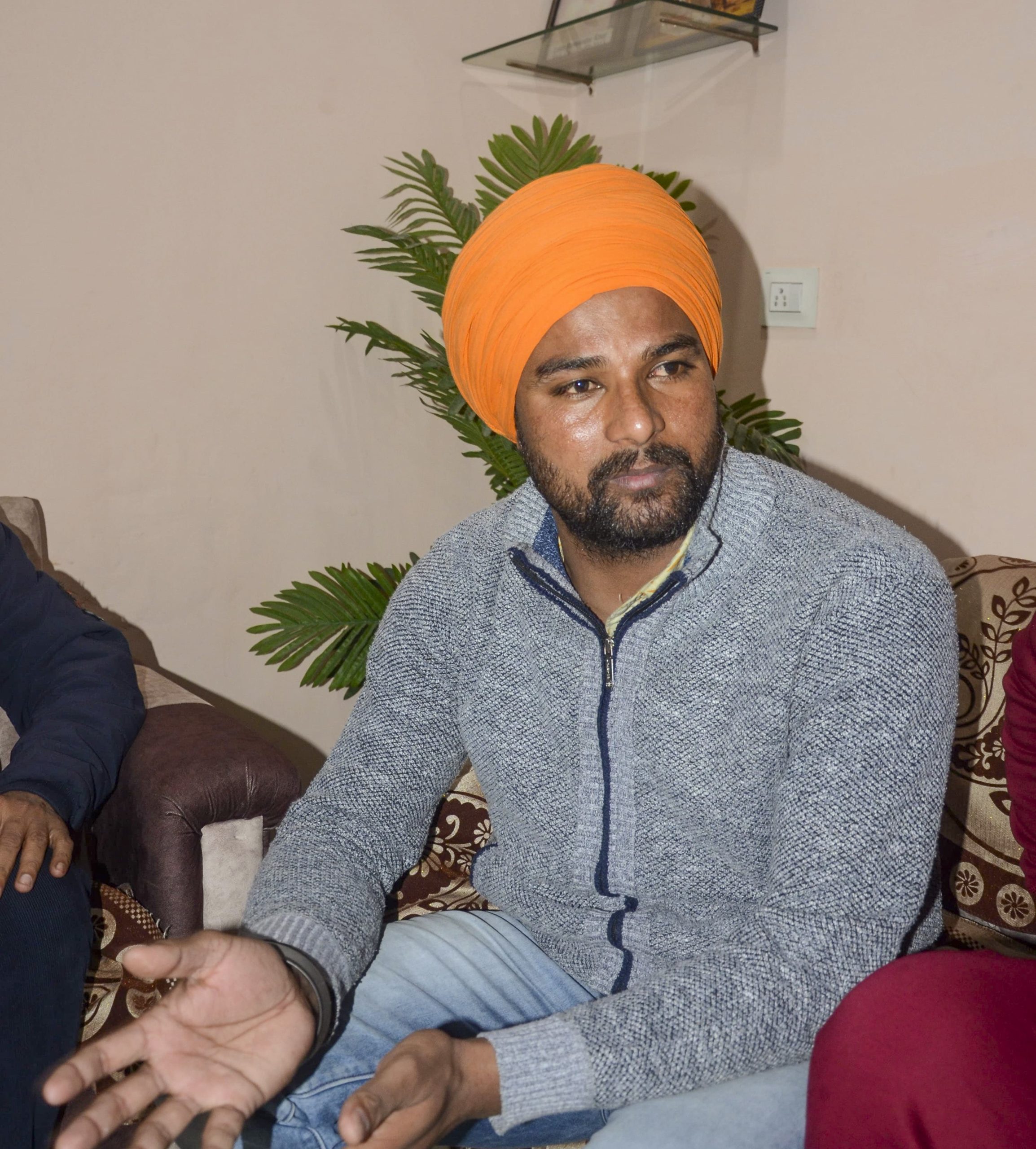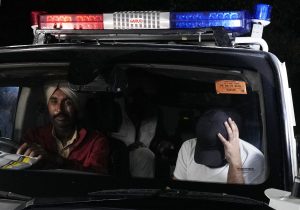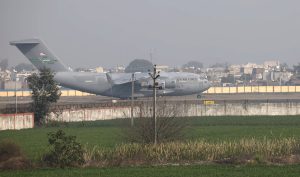- Wednesday, April 23, 2025
Instead of a legal entry as promised, unscrupulous travel agents put them on the ‘donkey route’ – an illegal and risky pathway used by migrants to enter the US

By: India Weekly
PROMISED a legal entry into the US, Mandeep Singh had to trim his beard despite being a Sikh and risk life and limb as he dealt with crocodiles and snakes while going without food for days.
But his dream to secure a better life for his family in Amritsar came crashing down on January 27 when he was arrested by the US Border Patrol while trying to sneak into America via Tijuana in Mexico.
Mandeep was part of the 116 Indians to be deported by a US military aircraft that landed at the Amritsar airport late on Saturday (15), the second such batch of Indians to be sent back after February 5 amid a crackdown by the Donald Trump administration against illegal immigrants.
The third batch of 112 deportees reached Amritsar on Sunday (16) night.
Speaking to reporters, Mandeep, 38, showed several videos of the perilous journey his travel agent and sub-agents put him through.
Instead of a legal entry as promised, Mandeep’s travel agent put him on the ‘donkey route’ – an illegal and risky pathway used by migrants to enter the US.
Many more deportees from Punjab shared ordeals similar to Mandeep’s.
“It was too dangerous to traverse through the Panama jungles. We somehow managed to save ourselves from snakes, crocodiles and other animals,” recalled Lovepreet Singh, a deportee who returned on Saturday, sharing the perils of the donkey route.
They were even beaten up by ‘donkers’ taking them to the US border through the donkey route, Lovepreet said.

The family of Jasnoor Singh from Amritsar district said they spent ₹5.5 million to send him to the US.
“We sold our properties, commercial vehicles and one plot of land to raise the money,” a family member said.
Jasnoor was on the US military aircraft that brought back 112 Indians living illegally in that country on Sunday (16).
Sharing his ordeal, Mandeep said, “When I spoke to my agent, he said within one month I will be taken to the US in a legal way”.
The agent demanded ₹4 million, which he paid in two instalments. The journey began on a flight from Amritsar to Delhi last August.
“From Delhi, I was taken to Mumbai, then Nairobi, and onwards to Amsterdam through another nation. From there, we were taken to Suriname. When I reached there, the sub-agents demanded ₹2 million, which was paid back home by my family,” Mandeep said.
Detailing the uncertain journey that began from there, Mandeep said, “From Suriname, we boarded a vehicle which was cramped with many people like me. We were taken to Guyana. From there it was non-stop travel for days. We crossed Guyana, then Bolivia before reaching Ecuador.”
The group was then made to cross the Panama jungles.
“Here we were told by fellow travellers that if we ask too many questions, we could be shot. For 13 days, we moved through the treacherous route that included 12 canals. Crocodiles, snakes — we had to bear all. Some were given sticks to deal with the dangerous reptiles,” he said.
“We ate half-baked ‘rotis’ and sometimes noodles, as proper food was a distant thing. We used to travel 12 hours a day,” Mandeep said.

The group made a halt at Costa Rica after crossing Panama, and then began their journey to Honduras, where, Mandeep said, “We got to finally eat some rice.”
“But we did not get to eat anything while crossing through Nicaragua. In Guatemala, however, we were lucky to get some curd rice. By the time we reached Tijuana, my beard was trimmed forcibly,” Mandeep said.
On the morning of January 27, they were arrested by the Border Police after they were made to cross the border to sneak into the US, he said.
“The authorities told us that we will be deported. We were put in a detention centre for some days before we were sent back, he said.
Lovepreet, who hails from Gurdaspur district, said he left home one year ago.
“My travel agent put me on the donkey route, which was not safe. It was too dangerous to pass through the Panama jungles. We somehow managed to save ourselves from snakes, crocodiles and other animals.”
“We were taken to Mexico in a container. We weren’t even allowed to answer nature’s call. If we asked for it, the donkers would thrash us,” Lovepreet said.
Twenty-year-old Nishan Singh from Kapurthala district also narrated a similar ordeal.
“We were beaten up, not given food. We spent 16 days in a jungle, surviving mainly on water. Our mobile phones and other items were taken away,” said Nishan, whose family spent Rs 40 lakh to send him to the US.
Earlier on February 5, the first US military aircraft carrying 104 illegal Indian immigrants landed at the Amritsar airport.
No turbans at detention centre
Jaswinder Singh, 21, from Moga district, told Indian Express that he started his illegal journey to the US after selling his family’s land, buffalos, and mortgaging their two-room house.
They paid ₹4.4 million paid to an agent to get to the US.
He was among the second batch of Indian nationals deported by the US.
He claims that only after he reached Amritsar airport he was able to wear his turban again — nearly 20 days after being detained by US authorities on January 27 while crossing the US-Mexico border.
At the detention centre he was asked me to remove all his clothes, including his turban.
He and other Sikh youths pleaded with the authorities to return the turbans, but they refused.
The authorities suspected they might use the turban to commit suicide.
It was only after reaching Amritsar airport that I got my luggage back and wrapped my head with a parna (a cloth worn by Sikh men to cover their heads), he said.